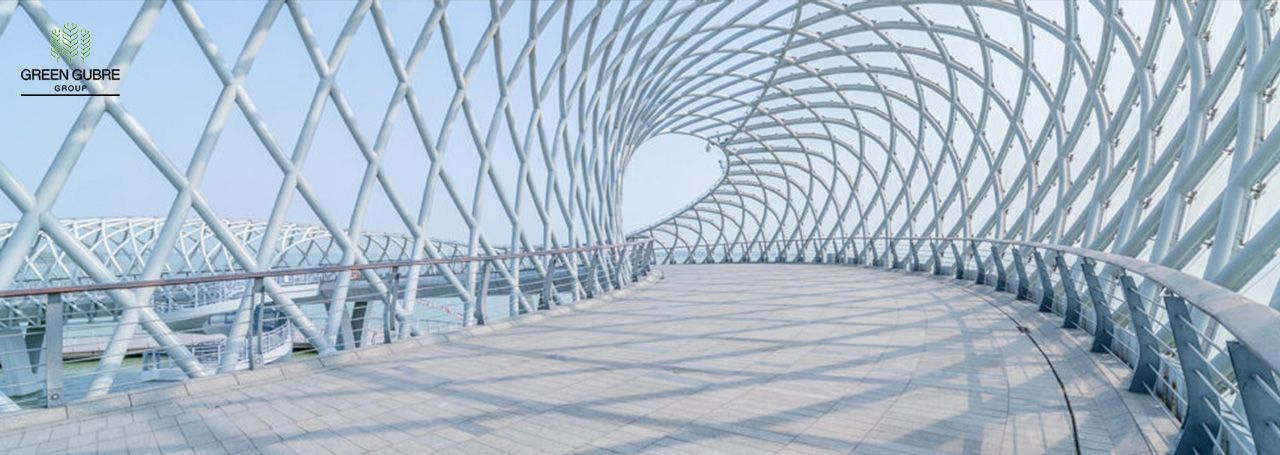The Role of Structural Steel in Modern Infrastructure Development
The Role of Structural Steel in Modern Infrastructure Development

Structural steel is a key material used in the construction of modern infrastructure, from skyscrapers and bridges to industrial facilities and transportation networks. Its strength, flexibility, and durability make it the preferred choice for large-scale construction projects that require reliable and resilient materials. This blog will explore the benefits, applications, and growing demand for structural steel in infrastructure development, as well as its role in shaping the future of urban landscapes.
What is
Structural Steel?
Structural steel refers to steel that is formed into specific shapes, such as beams, channels, and angles, to provide structural support in construction projects. It is known for its high strength-to-weight ratio, which allows engineers to design and build tall, expansive structures without compromising stability or safety. The material is commonly made from a combination of iron and carbon, and it may also contain other elements like manganese, phosphorus, and sulfur to improve its mechanical properties.
Key Benefits of Structural Steel:
1. High Strength and Durability:
Structural steel provides exceptional tensile strength, making it ideal for supporting heavy loads in large structures. It is resistant to warping, cracking, and other forms of deformation, ensuring that buildings and infrastructure remain stable over time.
2. Flexibility and Adaptability:
One of the key advantages of structural steel is its flexibility in design. It can be shaped, welded, and fabricated into a wide range of forms, allowing architects and engineers to create complex structures that are both functional and aesthetically pleasing.
3. Sustainability:
Structural steel is 100% recyclable, making it an environmentally friendly choice for construction projects. It can be recycled multiple times without losing its structural integrity, reducing the need for new raw materials and minimizing waste.
4. Cost-Effective Construction:
The strength and versatility of structural steel allow for faster construction times, reducing labor costs and minimizing disruptions to ongoing projects. Steel components can be prefabricated off-site and assembled quickly on-site, speeding up the construction process and lowering overall project costs.
5. Fire Resistance and Safety:
Structural steel can be treated with fire-resistant coatings, making it a safe and reliable material for buildings that must adhere to stringent fire safety standards. Its strength in extreme conditions makes it a trusted choice for constructing infrastructure that is designed to withstand natural disasters, such as earthquakes and hurricanes.
Applications of Structural Steel in Infrastructure Development:
1. Skyscrapers and High-Rise Buildings:
Structural steel is the material of choice for constructing skyscrapers and high-rise buildings due to its ability to support large vertical loads without compromising stability. Its flexibility also allows architects to design tall, slender structures that maximize space while maintaining structural integrity.
2. Bridges and Transportation Networks:
The high strength and durability of structural steel make it an ideal material for building bridges, highways, and rail systems. It can withstand the heavy loads and stresses associated with vehicular and rail traffic, ensuring the long-term safety and reliability of transportation infrastructure.
3. Industrial Facilities:
Structural steel is commonly used in the construction of factories, warehouses, and other industrial facilities where large open spaces are required. Its high load-bearing capacity allows for the construction of large, column-free interiors, providing flexibility in the layout of industrial equipment and machinery.
4. Stadiums and Sports Arenas:
Modern sports facilities, including stadiums and arenas, rely on structural steel to support expansive roofs, seating areas, and other large-scale architectural elements. The material’s strength and versatility allow for the creation of visually striking and functional designs that enhance the fan experience.
5. Energy Infrastructure:
Structural steel is a key component in the construction of energy infrastructure, including power plants, wind turbines, and transmission towers. Its ability to withstand harsh environmental conditions, such as high winds and extreme temperatures, makes it essential for ensuring the reliability and efficiency of energy systems.
The Growing Demand for Structural Steel:
As global populations continue to grow, there is an increasing demand for infrastructure that can accommodate expanding urban centers, transportation networks, and industrial facilities. Structural steel is at the forefront of this development, providing the necessary strength, flexibility, and sustainability to meet the demands of modern construction.
Governments and private sectors worldwide are investing in infrastructure projects aimed at improving transportation, energy, and public services. Structural steel’s role in these projects is crucial, as it enables the construction of durable, long-lasting infrastructure that can withstand the pressures of urbanization and industrial growth.
Additionally, with the increasing focus on sustainability in construction, the recyclability of structural steel makes it a preferred choice for eco-friendly projects. By using recycled steel, construction companies can reduce their environmental footprint while maintaining the highest standards of quality and safety.
Challenges and Innovations in Structural Steel:
While structural steel offers numerous benefits, there are also challenges associated with its use in construction. One of the primary challenges is the risk of corrosion in certain environments, such as coastal areas where steel is exposed to saltwater. To mitigate this issue, engineers often apply protective coatings or use corrosion-resistant steel alloys.
Another challenge is ensuring the safety and stability of steel structures during extreme weather events or seismic activity. However, advancements in engineering and construction technology have led to innovations such as earthquake-resistant designs and fire-resistant coatings, which enhance the performance of structural steel in challenging environments.
Future Trends in Structural Steel Use:
The future of structural steel in construction is closely tied to advancements in technology and sustainability. Key trends include:
1. 3D Printing and Prefabrication:
The use of 3D printing technology and prefabrication in structural steel construction is expected to grow in the coming years. These methods allow for faster and more precise construction, reducing material waste and labor costs.
2. Smart Structures:
Structural steel is increasingly being integrated into smart structures that incorporate sensors and monitoring systems to track the performance of buildings in real-time. This technology enhances safety and maintenance by detecting structural issues before they become critical.
3. Green Building Certifications:
As demand for sustainable construction grows, more projects are seeking green building certifications, such as LEED (Leadership in Energy and Environmental Design). Structural steel’s recyclability and energy efficiency make it an ideal material for projects that prioritize sustainability.
4. Hybrid Structures:
Hybrid structures that combine structural steel with other materials, such as timber and concrete, are gaining popularity. These structures offer the benefits of multiple materials, such as the strength of steel and the aesthetic appeal of timber, while optimizing costs and environmental impact.
Conclusion:
Structural steel is an indispensable material in modern infrastructure development, offering unmatched strength, flexibility, and sustainability. From skyscrapers and bridges to industrial facilities and sports arenas, structural steel plays a vital role in shaping the built environment. As the demand for durable and eco-friendly construction materials continues to rise, structural steel will remain a key component in the future of global infrastructure projects.




